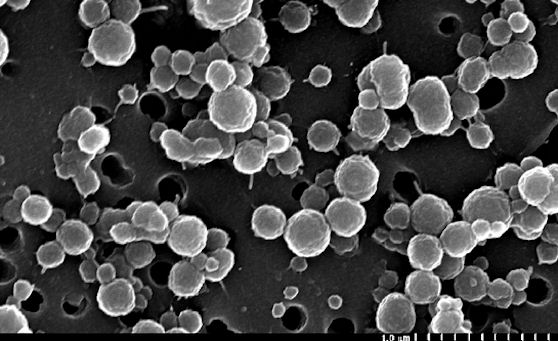Scanning electron micrograph of very small and numerous bacterial cells inhabiting icy brine channels in Antarctica’s Lake Vida, which lies in the Victoria Valley, one of the northernmost of the Antarctic dry valleys. (Credit: Christian H. Fritsen, Desert Research Institute)
Home Scanning electron micrograph of very small and numerous bacterial cells inhabiting icy brine channels in Antarctica’s Lake Vida, which lies in the Victoria Valley, one of the northernmost of the Antarctic dry valleys. (Credit: Christian H. Fritsen, Desert Research Institute) Scanning electron micrograph of very small and numerous bacterial cells inhabiting icy brine channels in Antarctica’s Lake Vida, which lies in the Victoria Valley, one of the northernmost of the Antarctic dry valleys. (Credit: Christian H. Fritsen, Desert Research Institute)


